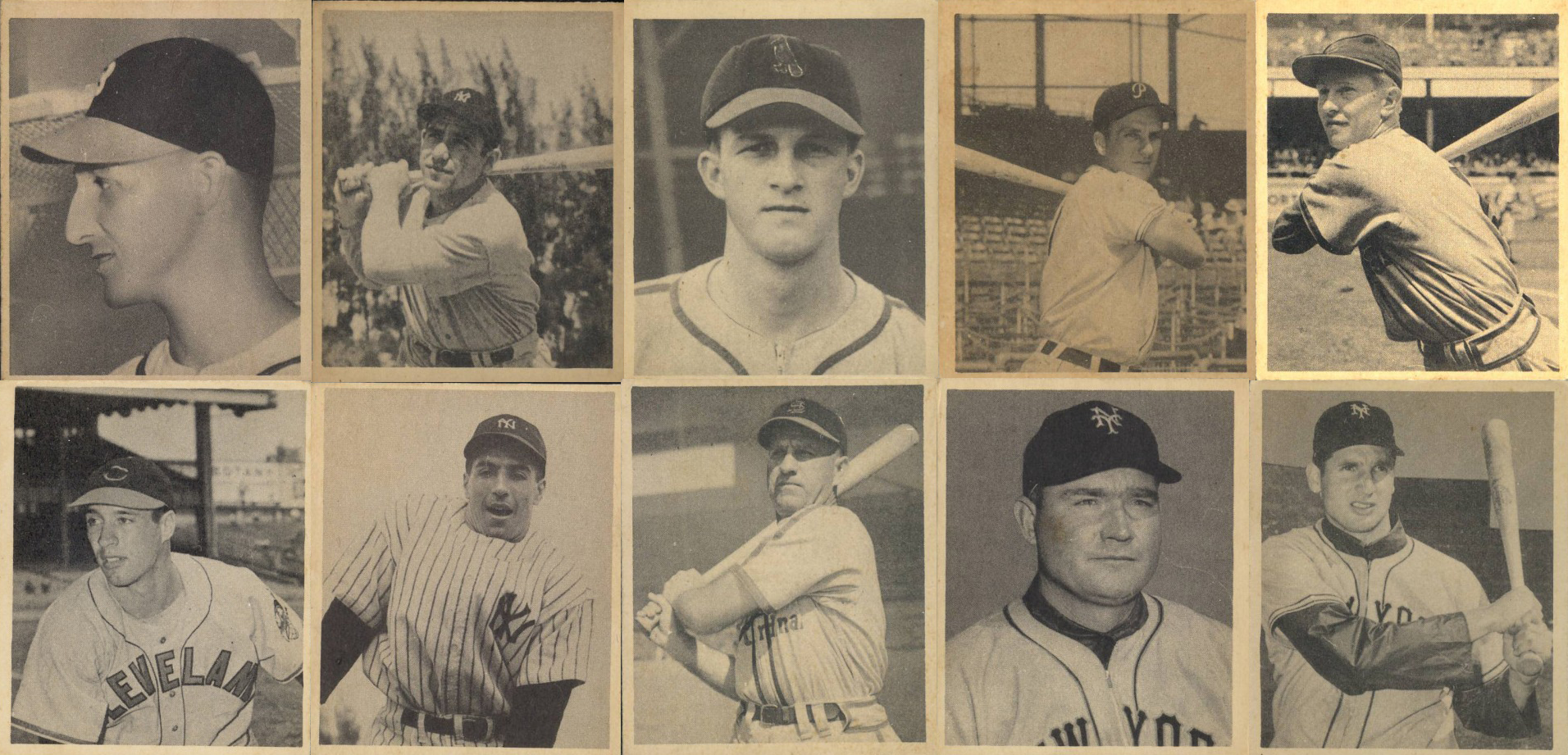One of the most challenging aspects of vintage set collecting is deciding which set to collect, especially if it’s your first. There are many factors to consider, such as the cost, the time it takes to complete the set, and whether the set has too many or not enough significant cards. For me, my first vintage set was the 1948 Bowman set.
If you used to look through the printed Beckett’s price guides back in the ’80s and ’90s, you may recall that the ’48 Bowman set was always the first one in the price guide section. Starting at the beginning seemed like a great place to start. The 1948 set was the first year of Bowman baseball cards and marked Bowman’s four-year reign as the top baseball card manufacturer, which ended with the 1952 Topps release.
Although the ’48 Bowman set may not be the most visually stunning set, it has many qualities that make it enjoyable to collect. First, the set has only 48 cards, making it one of the smallest regular issue sets available. This allows a set collector to get to know each card and the players it features intimately.
Regarding the players, ’48 Bowman has a high percentage of players who are in the Baseball Hall of Fame. As of this writing, 9 of the 48 cards (18%) feature players who have a plaque in Cooperstown. Five of those nine players are rookies, including two key cards, Yogi Berra and Stan Musial. Both players are widely considered to be among the greatest players of all time, as well as among the most beloved. Yogi, an 18-time All-Star and 10-time World Series champion, was one of the best catchers ever and a leader of the great Yankees teams of the 1940s, ’50s, and ’60s. Stan “the Man” Musial is regarded as one of the most consistent hitters of all time. Both were U.S. Navy servicemen during World War II.
Another interesting aspect of the ’48 Bowman baseball set is the short prints. As previously mentioned, the set has only 48 cards, but there are 12 short prints in the first 36 cards, and the last 12 cards (#37-48) are slightly harder to find than the first 36.
I’ve provided some information below on this set including the checklist. If you decide to start this set, remember to stay within your budget and only select examples of the cards that you will be pleased with. These cards are not incredibly difficult to find, so remember that collecting is a marathon, not a sprint.
1948 Bowman Information
# of Cards: 48
Card Dimensions: 2 1/16″ x 2 1/2″
Checklist
| 1 | Bob Elliott RC | Boston Braves |
|---|---|---|
| 2 | Ewell Blackwell RC | Cincinnati Reds |
| 3 | Ralph Kiner RC | Pittsburgh Pirates |
| 4 | Johnny Mize RC | New York Giants |
| 5 | Bob Feller RC | Cleveland Indians |
| 6 | Larry “Yogi” Berra RC | New York Yankees |
| 7 | Pete Reiser RC, SP | Brooklyn Dodgers |
| 8 | Phil “Scooter” Rizzuto RC, SP | New York Yankees |
| 9 | Walker Cooper RC | New York Giants |
| 10 | Buddy Rosar RC | Philadelphia Athletics |
| 11 | Johnny Lindell RC | New York Yankees |
| 12 | Johnny Sain RC | Boston Braves |
| 13 | Willard Marshall RC, SP | New York Giants |
| 14 | Allie Reynolds RC | New York Yankees |
| 15 | Eddie Joost | Philadelphia Athletics |
| 16 | Jack Lohrke RC, SP | New York Giants |
| 17 | Enos Slaughter RC | St. Louis Cardinals |
| 18 | Warren Spahn RC | Boston Braves |
| 19 | Tommy Henrich | New York Yankees |
| 20 | Buddy Kerr RC, SP | New York Giants |
| 21 | Ferris Fain RC | Philadelphia Athletics |
| 22 | Floyd “Bill” Bevens RC, UER, SP | New York Yankees |
| 23 | Larry Jansen RC | New York Giants |
| 24 | Emil “Dutch” Leonard SP | Philadelphia Phillies |
| 25 | Barney McCosky UER | Philadelphia Athletics |
| 26 | Frank Shea RC, SP | New York Yankees |
| 27 | Sid Gordon RC | New York Giants |
| 28 | Emil Verban RC, SP | Philadelphia Phillies |
| 29 | Joe Page RC, SP | New York Yankees |
| 30 | Whitey” Lockman RC, SP | New York Giants |
| 31 | Bill McCahan RC | Philadelphia Athletics |
| 32 | Bill Rigney RC | New York Giants |
| 33 | Billy “The Bull” Johnson RC | New York Yankees |
| 34 | Sheldon Jones RC, SP | New York Giants |
| 35 | George Stirnweiss RC | New York Yankees |
| 36 | Stan Musial RC | St. Louis Cardinals |
| 37 | Clint Hartung RC | New York Giants |
| 38 | Al “Red” Schoendienst RC | St. Louis Cardinals |
| 39 | Augie Galan RC | Cincinnati Reds |
| 40 | Marty Marion RC | St. Louis Cardinals |
| 41 | Rex Barney RC | Brooklyn Dodgers |
| 42 | Ray Poat RC | New York Giants |
| 43 | Bruce Edwards RC | Brooklyn Dodgers |
| 44 | Johnny Wyrostek RC | Cincinnati Reds |
| 45 | Hank Sauer RC | Cincinnati Reds |
| 46 | Herman Wehmeier RC | Cincinnati Reds |
| 47 | Bobby Thomson RC | New York Giants |
| 48 | George “Dave” Koslo RC | New York Giants |


